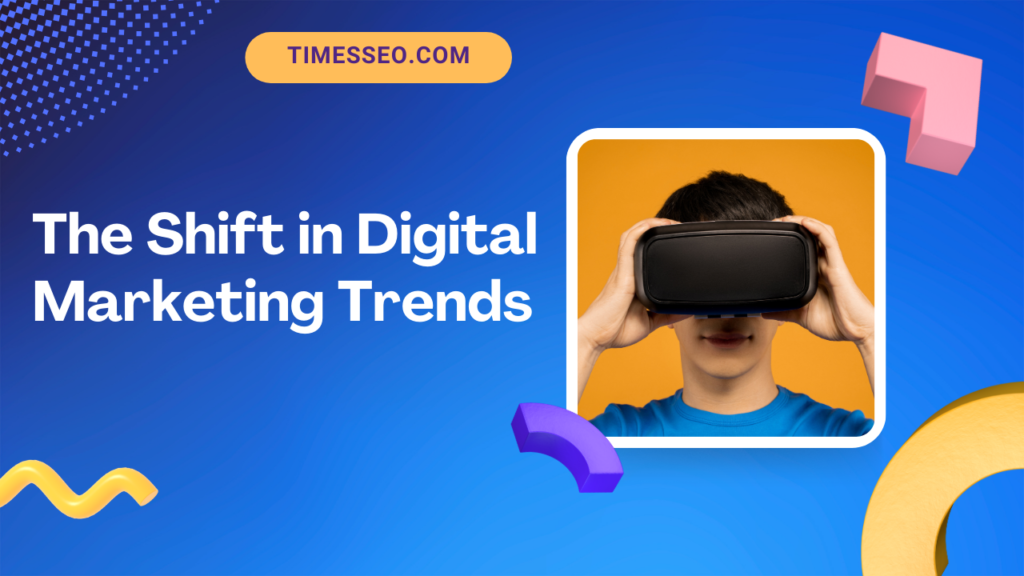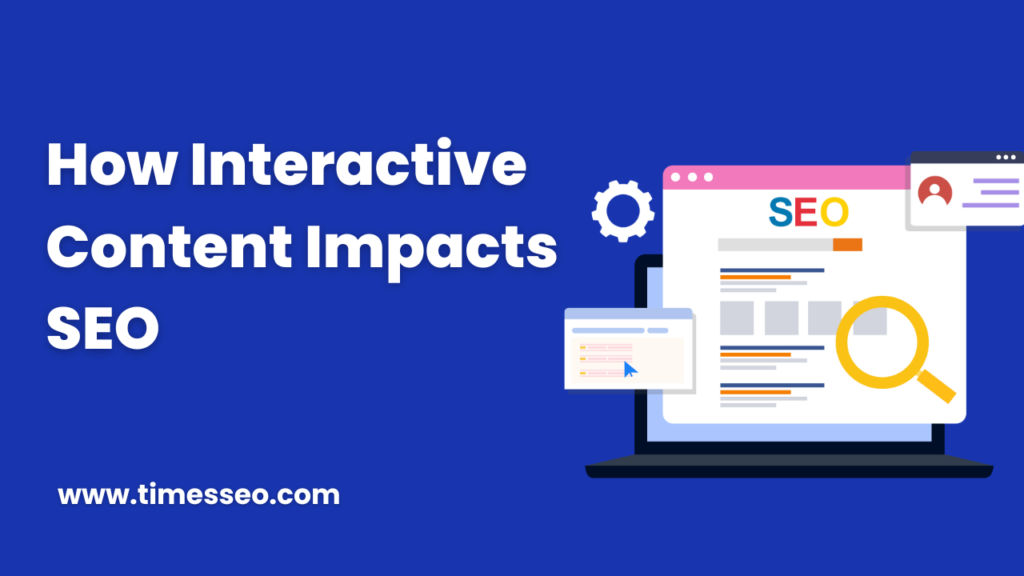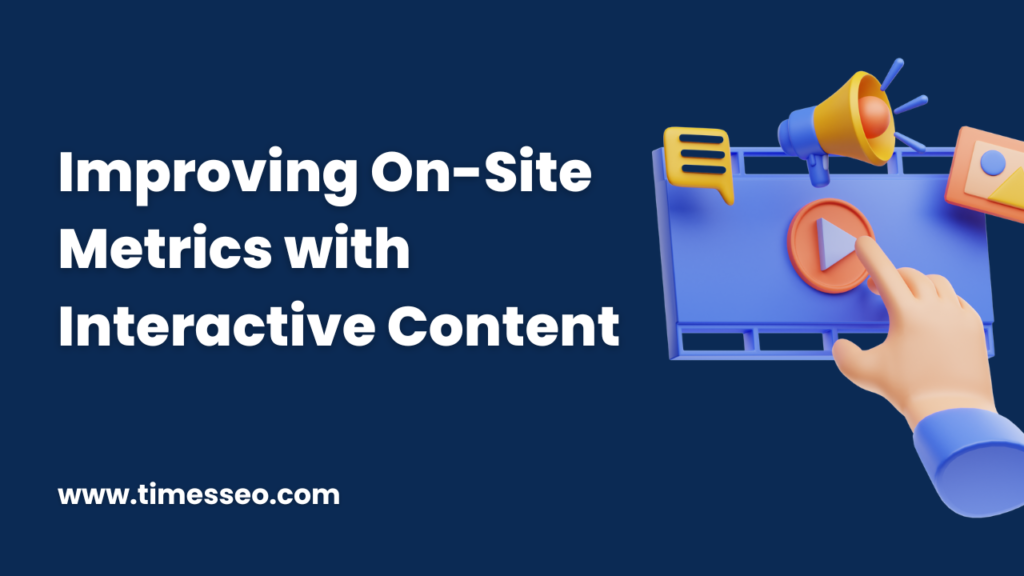
Why Marketers Are Prioritizing Interactive Content for SEO
Discover why marketers are embracing interactive content for SEO to boost engagement, improve rankings, and create memorable user experiences.
Table of Contents
Introduction
The world of digital marketing is evolving at lightning speed, and traditional blog posts or static articles are no longer enough to keep audiences hooked. Today, interactive content is the new king of SEO. In order to stand out in congested search results, marketers are using dynamic experiences, such as polls, quizzes, calculators, and interactive infographics. But why exactly are they prioritizing interactive content for SEO? Let’s dive in.
The Shift in Digital Marketing Trends
Once upon a time, simply stuffing keywords into a blog post worked. Not anymore. Both consumers and search engines have become more intelligent. People crave engagement, personalization, and memorable experiences—things static content can’t always deliver. That’s where interactive formats step in.
Understanding Interactive Content
Digital experiences that demand active user interaction are referred to as interactive content. Instead of passively consuming, users click, swipe, answer, or engage with the content.
Examples include:
- Quizzes (Buzzfeed-style personality tests).
- Polls on Instagram or LinkedIn.
- Interactive infographics.
- ROI calculators for businesses.
- Gamified learning tools.
No wonder brands across industries—from SaaS to retail—are leveraging it.
How Interactive Content Impacts SEO
So, how does all this tie into SEO? Google loves content that users love. Interactive content boosts:
- Dwell time: Visitors stay longer, signaling quality.
- Lower bounce rates: Users interact instead of leaving.
- Engagement metrics: Clicks, shares, and comments matter.
All of these are positive ranking signals.
Types of Interactive Content That Boost SEO
- Quizzes & Surveys – Fun, shareable, and data-rich.
- Calculators & Tools – Especially valuable in SaaS, finance, or health industries.
- Compared to plain text, interactive infographics are easier to understand.
- Videos & Polls – Keep social and web audiences engaged.
- AR/VR Experiences – Still growing but with massive potential.
Why Google Rewards Engagement
Google’s ultimate mission? Provide the best user experience. Engagement is proof your content delivers value. High interaction rates tell Google: “This page deserves to rank.”
Signals include:
- CTR (Click-Through Rate).
- Time on site.
- Interaction patterns.
Interactive Content and Backlink Building
Backlinks remain SEO gold, and interactive content is a link magnet. A well-designed ROI calculator or infographic can earn organic links from blogs, media, and industry sites.
For example, HubSpot’s “Website Grader” tool has been linked thousands of times—proof of interactive content’s power.
Improving On-Site Metrics with Interactive Content
Engagement-driven content doesn’t just look pretty—it improves metrics that matter:
- Longer session duration.
- Higher scroll depth.
- More page interactions.
Better metrics = better SEO.
The Role of Personalization
Interactive content also allows for tailored experiences. Think: quizzes that recommend products, or calculators that show personalized savings. This not only helps SEO but also drives conversions.
How Interactive Content Supports Content Marketing Strategies
Interactive content fits seamlessly into storytelling. Instead of telling your audience about a problem, you let them experience it through engagement. This builds trust, credibility, and authority.
Interactive Content in Social Media
On social platforms, interactive content shines. Polls, reels, and gamified experiences are highly shareable, often going viral. And the more your content is shared, the higher its SEO visibility.
Challenges Marketers Face
Of course, it’s not all sunshine. Marketers face challenges like:
- Cost & resources – Good design isn’t cheap.
- Technical hurdles – Requires tools and skills.
- ROI tracking – Harder to measure than clicks.
Best Practices for Creating Interactive Content
To maximize results:
- Keep it simple – Don’t overcomplicate.
- Design mobile-first – Most users are mobile.
- Optimize for SEO – Metadata, structured data, and keywords still matter.
Future of Interactive Content in SEO
Looking ahead, interactive content will merge with AI, voice search, AR, and VR. Imagine asking Alexa to walk you through an interactive quiz or exploring a product in virtual reality. The future is engagement-first.
Conclusion
Interactive content isn’t just a “nice-to-have”—it’s becoming a must-have for SEO success. It’s the ideal fusion of user happiness and search engine optimization, leading to more engagement and improved rankings. If you’re not investing in interactive experiences yet, now’s the time to start.
Frequently Asked Questions
Interactive content is any digital format (quizzes, polls, tools) requiring user participation, designed to boost engagement and SEO metrics.
Not directly—but the engagement signals it creates (time on site, backlinks, shares) influence rankings.
Quizzes, polls, and calculators are cost-effective and high-impact.
Track metrics like dwell time, shares, lead conversions, and backlink growth.
It can be, but affordable tools like Outgrow and Typeform make it accessible for all budgets.
Table of Contents
Popular Posts
-
 Affordable Technical SEO Audit for Small Business: A Complete Guide26 Jun 2025 Blog
Affordable Technical SEO Audit for Small Business: A Complete Guide26 Jun 2025 Blog -
 How to Get an Affordable Technical SEO Audit for Small Business27 Jun 2025 Blog
How to Get an Affordable Technical SEO Audit for Small Business27 Jun 2025 Blog -
 The Ultimate Local SEO Audit Checklist for Startups28 Jun 2025 Blog
The Ultimate Local SEO Audit Checklist for Startups28 Jun 2025 Blog -
 Local SEO Audit Checklist for Startups: A Beginner’s Guide28 Jun 2025 Blog
Local SEO Audit Checklist for Startups: A Beginner’s Guide28 Jun 2025 Blog -
 Top On-Page SEO Audit Steps for Service Websites Every Business Should Know29 Jun 2025 Blog
Top On-Page SEO Audit Steps for Service Websites Every Business Should Know29 Jun 2025 Blog -
 Technical SEO for WordPress: The Ultimate Beginner’s Guide01 Jul 2025 Blog
Technical SEO for WordPress: The Ultimate Beginner’s Guide01 Jul 2025 Blog -
 The Impact of On-Page SEO Audit Steps for Service Websites on UX01 Jul 2025 Blog
The Impact of On-Page SEO Audit Steps for Service Websites on UX01 Jul 2025 Blog -
 Technical Mobile SEO Audit Tips for Developers02 Jul 2025 Blog
Technical Mobile SEO Audit Tips for Developers02 Jul 2025 Blog










